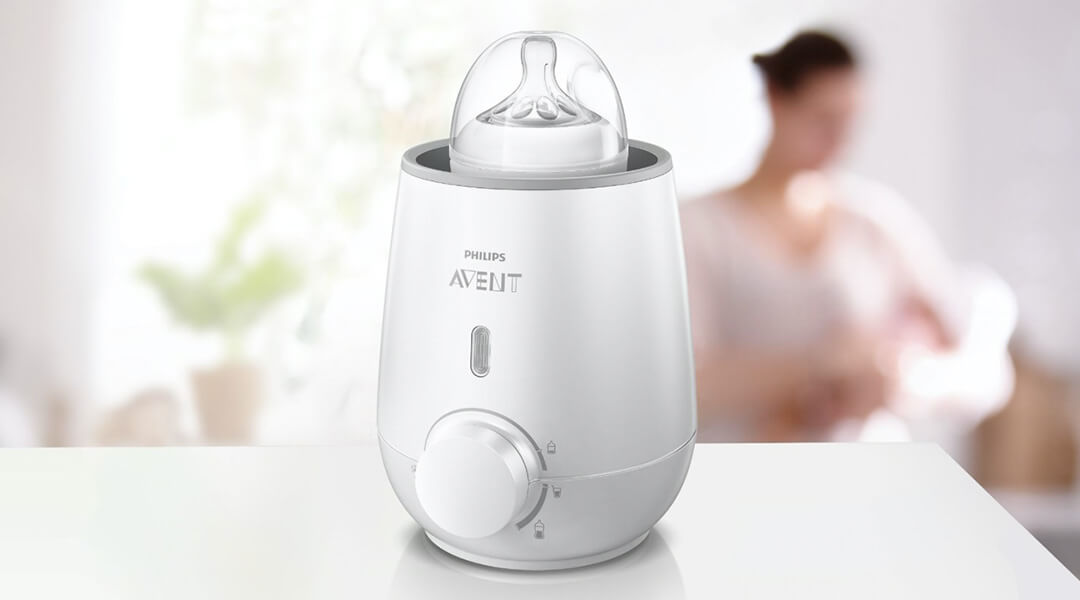How To Pick The Best Baby Bottle Warmer Guide
Parents Best Gadget: The Baby Bottle Warmer
Night time feedings are common when you have a newborn and having a bottle warmer would help make life more convenient for the new parents as it helps speed up the bottle warming process.
Although it can be used up till the baby is older, parents of infants 0 – 12 months or those with little time to waste (don’t we all, though? ☺) would benefit most from having one at home.
As with most other baby products, you have a wide variety of baby bottle warmers available in the market today. Choosing one can be quite a chore, having to read up on the pros and cons of each of them so that you can buy the best one.
Here’s where we come in at BabyDotDot to try to alleviate some of that headache and help you make a more informed decision on which bottle warmer best fits your needs.

Check out this newly published post where we share a few recommended bottle warmers and their product reviews as well as the pros and cons of each bottle warmers.
Toggle For Table Of Content
Why Should You Use a Bottle Warmer?

Some parents may argue that a bottle warmer isn’t necessary as there are other ways to heat up baby’s milk without yet another device taking up space on your countertop.
But, picture this…it’s in the middle of the night and you’re jolted awake by your baby’s cries. Would you want to grab your baby and then fumble around the kitchen trying to warm her bottle over the stove, or a slow, hot water bath?
It will be far quicker and more convenient to place the bottle in a bottle warmer and with the simple press of a button, leave the job to the trusty, compact device, thus leaving you fully available to pacify your fussing baby.
Moreover, using the right bottle warmer also ensures that milk is equally heated (no hot spots, which is common if you are using a microwave to do your heating).
Over-Heat Breast Milk
Milk should not be over-heat as that would deteriorate the valuable nutrients in the milk (especially in the case of breast milk) that is vital to baby’s health and immunity. Of course, not overheating the milk also ensures you do not accidentally burn baby during feeding.
Using a bottle warmer not only helps keep baby’s milk at a consistent temperature, it also allows you to warm up milk on the go (if you choose a portable warmer).
Last but not least, using a bottle warmer instead of heating up the bottle by letting it run over hot water helps conserve water as water (and your time) is not wasted with baby’s every feeding.
Types of Bottle Warmer

There are several types of bottle warmers in the market today; each serving its purpose; be it the conventional countertop bottle warmer, or one that is intended to be portable or for use during travel.
Countertop Bottle Warmers
Countertop bottle warmers are most commonly used, and as the name suggests, usually placed on the kitchen counter or some dresser. Some of these types of bottle warmers include a bottle cooler, which can be a useful addition when it comes to night feedings as your milk bottles would be within easy reach.
Portable Bottle Warmers
Portable bottle warmers are compact and designed to be easily moved around the house. Since it may not always be near a power source, you may need to use batteries to operate it so do keep that in mind when making a purchase.
Travel Bottle Warmers
Travel bottle warmers usually operate with batteries or can be plugged into your vehicle’s cigarette lighter. These bottle warmers are handy when you have travel plans or commute often. However, the tradeoff is that heating will generally take slightly longer than the usual countertop warmers.

Things to Consider When Buying a Bottle Warmer
Bottle warmers are available in many shapes and sizes. Not only that, the methods or technology used to warm baby’s milk is also different, for example, some use steam while others use a warm water bath.
Keeping that in mind, let’s take a closer look at what are some of the things (other than price) you would want to consider when choosing the best bottle warmer:
Compatibility
When we say compatibility, here we are referring to whether or not the bottle warmer you are considering to purchase can fit the size or shape of milk bottles that you will be using with it.
You will want to take extra precaution here if you are using larger 8 oz bottles, so as to ensure that the warmer you pick can house your milk bottle nicely.
Alternatively, you could look out for bottle warmers which specify that it has a universal warming chamber rather than bottle inserts. The benefit to that would be that you could use it also to warm up frozen breast milk in bags or bottles, as well as small jars of baby food.
Bottle Heating (Speed, Protection of Nutrients and Heating Consistency)
Usually, the primary reason parents buy a bottle warmer is to save time and be able to heat up the bottle efficiently.
Especially for babies that are still on breast milk, being able to heat up the milk consistently and at the right temperature becomes even more important as breast milk contains valuable nutrients which will be destroyed if overheated.
Most bottle warmers have several warming options, providing a speedy warm setting that will quickly heat up a cold bottle, or a “stay warm” setting that starts once the bottle has achieved its preferred temperature.
The latter is particularly useful if you have begun warming the bottle and got carried away with other tasks such as changing baby’s diaper or tending to another child, as the warmer will help maintain the temperature at the proper level (instead of allowing it to cool down again, thus requiring a reheat later).
Ease of Use
It would not be pleasant to have to fumble around trying to figure out how to use the bottle warmer as the baby is crying for milk. Hence, it is important to get a good bottle warmer that is easy to use since you will be using it frequently throughout the whole day.
Not only should the setup process be straightforward, but a good bottle warmer should also be easy enough to use so that you can quickly and consistently warm up baby’s bottle. The dials on the warmer should be easy to read, and you should be able to use it intuitively.
Ease of Cleaning
Over time, as you use the bottle warmer, some mineral deposits (or even mold) can build up. Hence it is important to keep the bottle warmer clean in order to maintain its proper function as well as not to impact baby's health adversely.
When selecting a bottle warmer, you may want to look for a model that either has lesser parts to disassemble (and reassemble) or one where the setup is not too complicated.
Safety
A bottle warmer that has a good safety feature is one which prevents from overheating by automatically shutting off when it has reached the preferred temperature or if the water level has dropped below a certain threshold (to avoid the unit from burning up).
Besides the auto shut off feature, certain bottle warmer models also has a “keep warm” feature so that the bottle will not start cooling down, and this is especially useful when you get side-tracked with other tasks after putting down the bottle for heating.
Portability
There may come a time when you decide to take the bottle warmer with you on the road with the baby. You may want to keep that possibility in mind when choosing your bottle warmer as some models may not be portable either due to its size, or the power supply requirement.
Space Saving
The bottle warmer is essentially another appliance for which you will need to find space for in your house. Hence, you may want to look for one that is space-saving.
In some cases, parents may even end up with more than one unit, so that it is more convenient for them to warm up baby’s bottle in the middle of the night depending on where they are at in the house.
Extra Features
Most parents would appreciate a bottle warmer which gives a signal or beeps once the bottle is warmed up. Some bottle warmers come with extra features that may be a good bonus for you depending on your usage.
For example, some can be used as sterilizers for not just the bottle, but also small items such as pacifiers or teats/nipples. Such feature would be helpful in ensuring baby’s items are easily kept clean.
Another useful feature is a night light, allowing you to use the bottle warmer easily during night time feedings without having to switch on the harsh overhead lights.
Such a feature is great if you happen to be placing the bottle warmer in the bedroom or nursery where baby sleeps.
There are some models that come with a bottle cooler. This allows you to store one or 2 bottles of milk in the same room where you will be feeding the baby.
Such bottle warmer enabling you just easily to take out a chilled bottle from the cooler and plunk it into the warmer and start the heating process.
Setup, Use and Care of the Bottle Warmer
Although there are many brands and models of bottle warmers, the guidelines around their setup, usage, and care are the same for the most part.
It is vital that you use and maintain the unit carefully so that there is no safety or health hazard and to have a longer lasting unit.
Setup
The first thing you would want to do when you get your baby bottle warmer is to read the instructions or manual carefully as that would give you model-specific information on how to setup, use and care for your appliance.
Next, you will have to decide where you will be placing the bottle warmer – on the kitchen counter (which is the logical place for most), in baby’s room or your bedroom? While making that decision, you may want to consider:
- Where will you usually be feeding your child? Will the feeding be done in the same room most of the time?
- Do you have enough space for the bottle warmer on the counter, dresser, or wherever it is that you intend to place the bottle warmer? An overcrowd space can easily get the bottle warmer knocked down.
- Do you have the appropriate power source that the bottle warmer needs near the counter where you intend to place it?
- Do you intend to clean the bottle warmer every day? If so, can it be easily unplugged from its power source and be easily carried back and forth?
Use
Your bottle warmer is now set up, and you are about to give it a whirl. First, you would fill water in the warmer (there will usually be a line indicator in the unit). Then, place your bottle in the warmer and turn on the power supply and the unit’s switch/dial.
Depending on the model you selected, it may give you some alert or signal once the bottle is heated to the desired temperature and the warmer will automatically shut off or keep the bottle warm until you are ready to feed the baby.
Once you have picked up the bottle, remember to turn off the unit. It is also advisable that you give it a light swirl just to ensure there were no hot spots (do not shake the bottle hard if it contains breast milk as that changes the composition and reduces the good qualities in the milk).
Similarly, you may want to test the milk temperature on your wrist first before giving your baby the bottle.
Care
As with most appliances, keeping it well maintained and using it with care will help ensure the longevity of your bottle warmer. Here are some steps you can take to keep your bottle warmer in good, working condition:
- Regularly wipe down the entire unit (both the interior as well as exterior) using just a damp cloth. Do not submerge the whole unit in water and do not use any harsh cleaners or bleach.
- Avoid cleaning the unit when it is still hot or when it is still plugged in. Once the bottle warmer has cooled down after the last use, empty out the remaining water.
- At least once a month, descale the bottle warmer to remove the mineral deposits that build up with constant use of the unit. You can do this by mixing 2 parts of white distilled vinegar to 4 parts of water and running the warmer through its usual cycle. Rinse it and then dry it out (If you let it stay damp, bacteria may build up, and the smell may turn foul).
Conclusion
As you can see, there are many different types of bottle warmers and with that, different points of consideration in making your bottle warmer selection. We have shared some common practices when it comes to setting up the bottle warmer and using and caring for your unit.
If you are interested to know what are some of the top bottle warmers in the market today, as well as the pros and cons of each, head on over to Part 2 of this article where we share a few recommended bottle warmers and their product reviews.


